
Erftstadt is a town located about 20 km south-west of Cologne in the Rhein-Erft-Kreis, state of North Rhine-Westphalia, Germany. The name of the town derives from the river that flows through it, the Erft. The neighbouring towns are Brühl, Kerpen, Zülpich and Weilerswist.

Charlottenburg-Wilmersdorf is the fourth borough of Berlin, formed in an administrative reform with effect from 1 January 2001, by merging the former boroughs of Charlottenburg and Wilmersdorf.

Wilmersdorf, an inner-city locality of Berlin, lies south-west of the central city. Formerly a borough by itself, Wilmersdorf became part of the new borough of Charlottenburg-Wilmersdorf in Berlin's 2001 administrative reform.
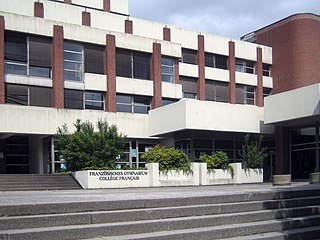
The Französisches Gymnasium is a long-existing francophone gymnasium in Berlin, Germany. Traditionally, it is widely regarded as an elite high school. It is also the oldest public school in Berlin. Its creation was ordered by Frederick William of Brandenburg.

Erich Kurt Richard Hoepner was a German general during World War II. An early proponent of mechanisation and armoured warfare, he was a Wehrmacht army corps commander at the beginning of the war, leading his troops during the invasion of Poland and the Battle of France.
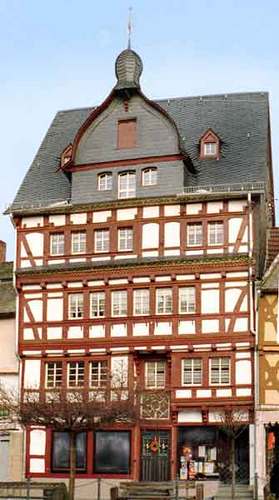
Adenau is a town in the High Eifel in Germany. It is known as the Johanniterstadt because the Order of Saint John was based there in the Middle Ages. The town's coat of arms combines the black cross of the Electorate of Cologne with the lion of the lords of Nürburg. The northern loop of the Nürburgring lies just outside the town.

Max Taut was a German architect of Prussian Lithuanian heritage.

Schwalmstadt is the largest town in the Schwalm-Eder district, in northern Hesse, Germany. It was established only in 1970 with the amalgamation of the towns of Treysa and Ziegenhain together with some outlying villages to form the town of Schwalmstadt.

Planegg is a municipality in the district of Munich, in Bavaria, Germany. It is located on the river Würm, 13 km west of Munich (centre).

Heinz Berggruen was a German-born American art dealer and collector who sold 165 works of art to the German federal government to form the core of the Berggruen Museum in Berlin, Germany. He was the father of John, Olivier and Nicolas Berggruen.

Nicolas Berggruen is a US-based billionaire investor and philanthropist. Born in Paris, France, he is a dual German and American citizen. He is the founder and president of Berggruen Holdings, a private investment company and the co-founder and chairman of the Berggruen Institute, a non-profit, non-partisan think tank that works to address global governance issues. In 2014, through the Institute, Berggruen launched Noema Magazine, formerly the WorldPost, a digital and print publication dedicated to exploring global issues.
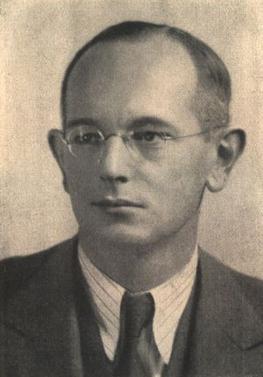
Wilhelm Cauer was a German mathematician and scientist. He is most noted for his work on the analysis and synthesis of electrical filters and his work marked the beginning of the field of network synthesis. Prior to his work, electronic filter design used techniques which accurately predicted filter behaviour only under unrealistic conditions. This required a certain amount of experience on the part of the designer to choose suitable sections to include in the design. Cauer placed the field on a firm mathematical footing, providing tools that could produce exact solutions to a given specification for the design of an electronic filter.

The Villa Romana Prize, German: Villa-Romana-Preis, is an art prize awarded by the Deutscher Künstlerbund. It was established in 1905 and is the oldest German art award. The prize consists of a one-year artistic residence in the Villa Romana, a nineteenth-century villa on the Via Senese in the southern outskirts of Florence, in Tuscany in central Italy.
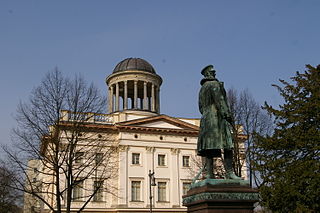
The Berggruen Museum is a collection of modern art classics in Berlin, which the collector and dealer Heinz Berggruen, in a "gesture of reconciliation", gave to his native city. The most notable artists on display include Pablo Picasso, Alberto Giacometti, Georges Braque, Paul Klee and Henri Matisse. The Berggruen Collection is part of the National Gallery of Berlin.
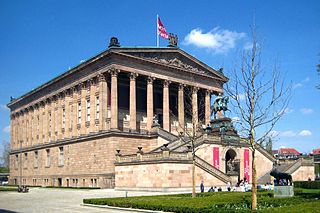
The National Gallery in Berlin, Germany, is a museum for art of the 19th, 20th and 21st centuries. It is part of the Berlin State Museums. From the Alte Nationalgalerie, which was built for it and opened in 1876, its exhibition space has expanded to include five other locations. The museums are part of the Berlin State Museums, owned by the Prussian Cultural Heritage Foundation.
Olivier Berggruen is a German-American art historian and curator, described by the Wall Street Journal as playing "a pivotal role in the art world."
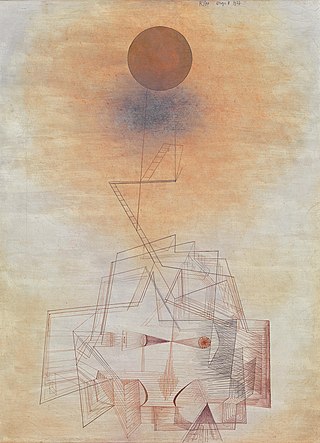
Limits of Reason is a 1927 painting by Paul Klee (1879-1940). It is in the permanent collection of the Pinakothek der Moderne—Pinakothek of modern art—in central Munich's Kunstareal.
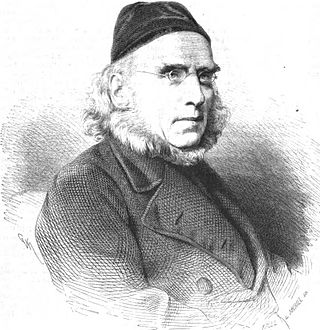
Emil Cauer the Elder was a German sculptor in the Classical style. Many of his children and grandchildren also became sculptors.

Große Berliner Kunstausstellung , abbreviated GroBeKa or GBK, was an annual art exhibition that existed from 1893 to 1969 with intermittent breaks. In 1917 and 1918, during World War I, it was not held in Berlin but in Düsseldorf. In 1919 and 1920, it operated under the name Kunstausstellung Berlin. From 1970 to 1995, the Freie Berliner Kunstausstellung was held annually in its place.

















